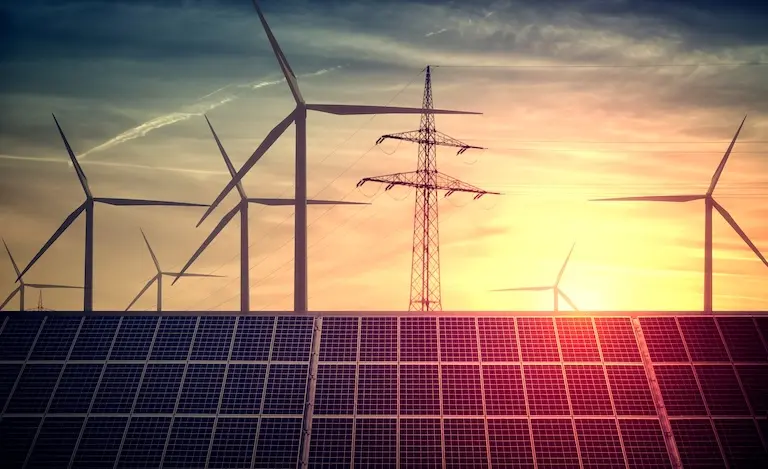Introduction to Electrical Systems on an FPSO
Floating Production, Storage, and Offloading units (FPSOs) are complex systems designed to support offshore oil and gas production. Electrical systems on FPSOs are critical for powering production operations, safety systems, and living accommodations. These systems are highly integrated and engineered to operate efficiently in challenging marine environments. Below is an overview of the key components of FPSO electrical systems:

Power Generation
Power is typically generated using gas turbines, dual-fuel engines, or diesel generators. Gas turbines often run on associated gas produced during operations, with diesel serving as a backup fuel. The generated power is usually medium voltage, such as 6.6 kV, 11 kV, or 13.8 kV, depending on the FPSO’s requirements.
Power Distribution
- Medium Voltage (MV) Systems: Generated power is distributed through MV switchgear to large consumers and step-down transformers.
- Low Voltage (LV) Systems: Transformers reduce MV to low voltage (400 V or 690 V) for smaller loads like lighting and utilities.
- Emergency Power: Backup systems, including emergency generators and batteries, ensure critical systems remain operational during power outages.
Key Consumers
- Process Equipment: Large consumers such as pumps, compressors, and separators.
- Marine Systems: Thrusters, ballast pumps, and mooring systems.
- Safety Systems: Fire pumps, emergency lighting, and blowout preventers.
- Living Quarters: HVAC, lighting, and other amenities.
- Offloading Systems: Cranes and offloading pumps for transferring hydrocarbons.
Voltages
- Medium Voltage (MV): Typically 6.6 kV, 11 kV, or 13.8 kV for heavy-duty equipment.
- Low Voltage (LV): Commonly 400 V or 690 V for smaller equipment and utilities.
- Direct Current (DC): Battery systems (e.g., 24 VDC or 48 VDC) for critical controls and emergency operations.
Control and Automation
FPSO electrical systems integrate Power Management Systems (PMS) and Distributed Control Systems (DCS) to ensure stability, load sharing, and efficient operation.
Hazardous Area Design
Electrical systems in hazardous areas are explosion-proof or intrinsically safe to comply with industry standards like ABS, IECEx, or ATEX.
With this understanding of FPSO electrical systems, we can now explore the challenges, risks, and mitigation strategies associated with these systems during construction, commissioning, and operation phases.
Challenges, Risks, and Mitigation in FPSO Electrical Systems
Floating Production, Storage, and Offloading units (FPSOs) are vital assets in offshore oil and gas production. Their electrical systems are designed to handle complex requirements across power generation, distribution, and critical operations. This blog explores the challenges, risks, and mitigation strategies associated with FPSO electrical systems during construction, commissioning, and operation phases.
Challenges in Construction Phase
Key Challenges:
- Complex Installation: The intricate routing of medium and low-voltage systems, particularly in hazardous areas, poses a significant challenge.
- Coordination Issues: Effective communication and scheduling between multiple contractors (mechanical, electrical, and instrumentation) can be difficult.
- Environmental Factors: Offshore environments demand marine-grade materials and robust protective measures for cables and equipment.
Risks:
- Equipment Damage: Improper handling or exposure to saltwater and humidity can lead to premature equipment failures.
- Non-Compliance: Failing to meet ABS, IEC, or ATEX standards can result in costly rework and project delays.
- Schedule Overruns: Shortages in skilled labor or delays in the supply chain can disrupt the project timeline.
Mitigation Measures:
- Conduct regular inspections to ensure compliance with industry standards.
- Use experienced contractors with expertise in offshore installations.
- Develop a detailed project schedule with buffer times for critical activities.
- Employ protective measures such as proper cable trays, junction boxes, and marine-grade materials.
Challenges in Commissioning Phase
Key Challenges:
- Testing and Energization: Safely testing and energizing high-capacity systems, such as medium-voltage switchgear, requires careful planning.
- System Integration: Ensuring seamless communication between Power Management Systems (PMS) and Distributed Control Systems (DCS) can be complex.
- Fault Identification: Detecting and rectifying potential faults before operation is critical to system reliability.
Risks:
- Electrical Faults: Short circuits, insulation failures, and grounding issues during initial energization can damage equipment and pose safety risks.
- System Failures: Poor integration between systems can lead to load-sharing issues and inefficiencies.
- Human Error: Incorrect testing procedures or lack of proper training can compromise commissioning activities.
Mitigation Measures:
- Follow detailed commissioning procedures and protocols.
- Simulate load scenarios to test the redundancy and stability of the power system.
- Train personnel on best practices for commissioning and ensure proper supervision.
- Use temporary protection devices during energization to prevent fault escalation.
Challenges in Operation Phase
Key Challenges:
- Corrosion: Operating in a marine environment with high humidity and salt exposure accelerates corrosion of electrical components.
- Power Fluctuations: Varying production requirements can lead to fluctuating power demands and potential load imbalances.
- Emergency Scenarios: Managing power interruptions during emergency shutdowns or equipment failures is critical for operational safety.
Risks:
- Equipment Degradation: Corrosion and wear can lead to unplanned outages and high maintenance costs.
- Power Interruptions: Failures in generation or distribution systems can halt production and compromise safety.
- Safety Hazards: Electrical faults in hazardous areas can result in explosions or fires.
Mitigation Measures:
- Implement a robust maintenance plan, including regular inspections and condition monitoring.
- Use corrosion-resistant and explosion-proof equipment for hazardous areas.
- Maintain a spare parts inventory for critical components like generators and switchgear.
- Continuously monitor electrical systems using advanced diagnostic tools.
- Train operators in fault response procedures and conduct regular emergency drills.
General Mitigation Strategies
Regulatory Compliance: Ensure all designs and installations meet ABS, IECEx, and ATEX standards to avoid legal and operational risks.
Redundancy: Design systems with N+1 or N+2 redundancy to ensure uninterrupted power supply during maintenance or failures.
Real-Time Monitoring: Install condition monitoring systems for key electrical assets to detect potential failures early.
Document Control: Maintain updated as-built documentation to streamline troubleshooting and future upgrades.
Cross-Discipline Collaboration: Encourage proactive communication between teams during all phases to address challenges effectively.
Conclusion
Electrical systems are the backbone of FPSO operations, ensuring the seamless functioning of production, safety, and accommodation systems. Addressing challenges and risks during construction, commissioning, and operation phases through robust mitigation measures is crucial for reliable and safe FPSO operations. By focusing on compliance, redundancy, and proactive maintenance, operators can optimize system performance and minimize downtime.
